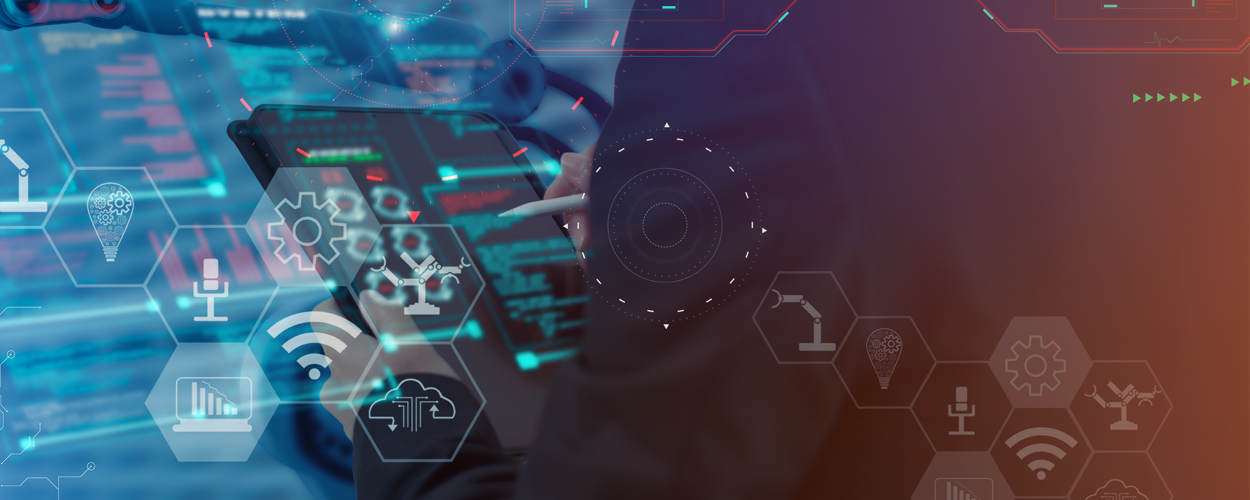Originally published March 2022—last updated March 2025.
In digital commerce businesses, everyone from business analysts to marketing professionals and finance groups to service organizations need access to customer profile, inventory and pricing data that can be housed in systems they don’t use on a day-to-day basis—or even have access to.
This is where EDI plays a vital role. EDI helps ecommerce businesses automate the exchange of key business documents—like purchase orders, invoices, and shipping updates—between systems and partners, eliminating manual work and reducing errors.
In this article, we’ll break down how EDI works in the world of ecommerce, why it still matters in the age of APIs, and how an EDI integration solution like Jitterbit EDI can help online retailers streamline operations, improve accuracy, and keep customers happy.
What is EDI?
EDI, or electronic data interchange, is a method used to exchange business documents—like invoices and purchase orders—between systems. Unlike email or fax, EDI restructures these documents into standardized formats so that they’re consistently readable. There are hundreds of these formats, called document types, and each one is designed for a specific purpose—for example, EDI 810 is the standard format for invoices, while EDI 850 is the standard for purchase orders.
EDI vs APIs for Ecommerce
When it comes to ecommerce, EDI and APIs each bring something valuable to the table. EDI is a long-standing standard for exchanging documents with suppliers, logistics providers, and other external partners. APIs, on the other hand, offer real-time data exchange, greater flexibility, and faster setup—making them ideal for connecting modern cloud apps, storefronts, and internal business systems.
But this isn’t an either-or situation—the smartest ecommerce operations use both. EDI handles external data exchange at scale, while APIs power dynamic, real-time integrations that drive better customer experiences and faster internal workflows.
The Role of APIs in Ecommerce
With an API-powered integration solution like Jitterbit iPaaS, end-users can not only finally get the data they need, it’s also incredibly simple.
- Select a recipe.
- Answer a few questions about the configuration.
- Deploy the connection.
- Monitor it all in one place.
Here a few examples of the ecommerce recipes that are currently baked in:
- Shopify Contacts —> Salesforce
- Connect Shopify and Salesforce contacts to ensure data integrity and gain a more accurate view of customers.
- Shopify Products —> Salesforce
- Connect Shopify product details with Salesforce to better understand inventory and fulfillment.
- Shopify Contacts —> NetSuite
- Connect Shopify contacts to Netsuite for accurate reporting and billing.
- Shopify Products —> NetSuite
- Connect Shopify Product to NetSuite for easier implementation, invoicing and service tracking.
How EDI and APIs Work Together to Drive Ecommerce Success
Can EDIs and APIs coexist in an ecommerce landscape that’s always changing? Yes! Using EDI and APIs can strengthen supplier relationships while providing more flexibility with internal business systems.
While APIs excel at real-time, flexible integrations for internal systems and cloud-based tools, EDI continues to be indispensable for large-scale B2B transactions, where reliable, batch-based document exchange is essential.
Here, we compare and contrast the two frameworks:
| Capability | EDI | API |
| Infrastructure: | On premises or via cloud | Cloud to computer |
| Data integration: | Pulls and automates the translation of data from specific documents, such as POs, into a standardized EDI format | Connects two or more systems, using objects and fields |
| Industry Use: | Industry standard | Increasingly growing |
| Better for working with larger retailers | Better for working with small to midsize retailers | |
| Required or preferred by big box retailers, such as Best Buy, Costco, and Home Depot | Growing in adoption; becoming the preference for some retailers, such as Wayfair | |
| Implementation: | Easier to integrate with legacy systems but is more complex | Better for custom integrations and provides more flexibility |
| Longer implementation period | Shorter implementation period | |
| Longer testing window that requires trading partner coordination | Real-time testing and results when the supplier or brand is ready to do it | |
| Delivery of data: | Batch model, updating every 15 minutes or so | Real-time model, using individual transactions |
According to Digital Commerce 360, 76.5 percent of all digital sales in 2021 were conducted via EDI, which was the year’s biggest B2B electronic sales channel. While the rate of growth for EDI transactions is slowing, the channel will continue to be the industry standard for years to come. A Google study found that slightly more than half of retailers say APIs accelerate innovation and the ability to scale and we expect to see this number grow in the coming years.
“We’re moving to a world in which retailers will need or want to have both API connectivity and EDI,” said Blair Pzytula, Product Manager. “Retailers will want to be where the opportunities are, working with big box retailers using EDI and newer marketplaces using API connectivity. Working in both frameworks will give them the flexibility they need to scale and react to changing market opportunities and customer demands.”
Jitterbit Harmony: A Unified EDI and API Integration Platform
In today’s ecommerce landscape, businesses need the flexibility to manage both large-scale external transactions and real-time internal integrations. With Jitterbit Harmony, you can do both seamlessly—learn how our all-in-one enterprise platform can automate your systems with EDI and API-connectivity by scheduling a demo with a product expert.



